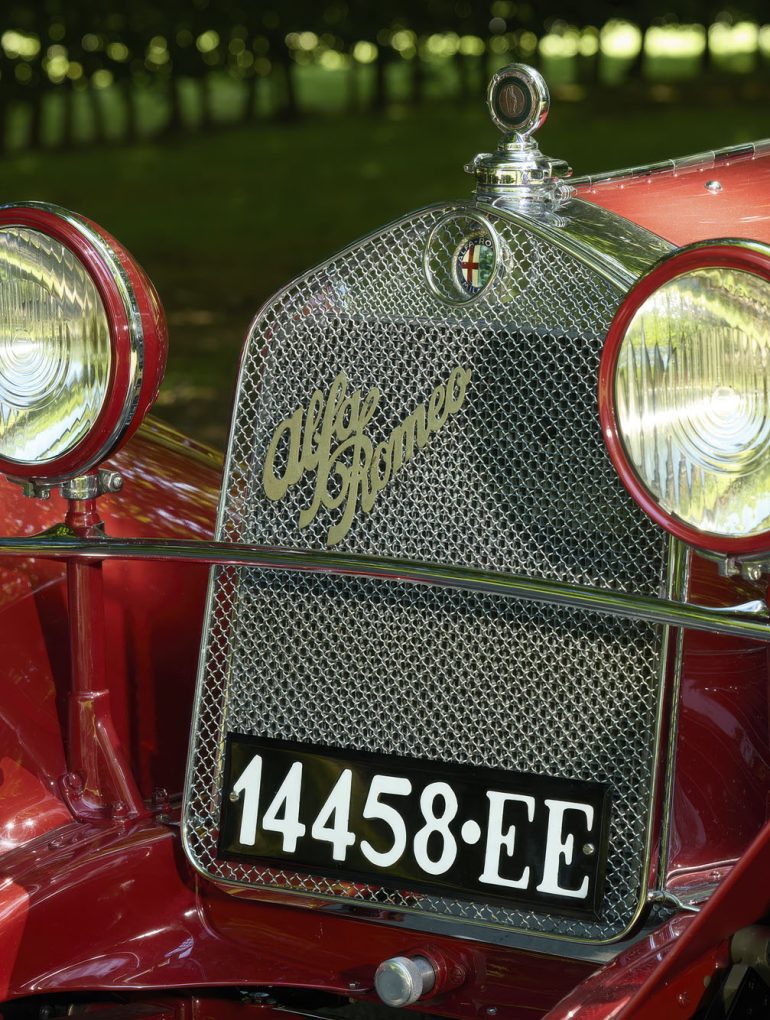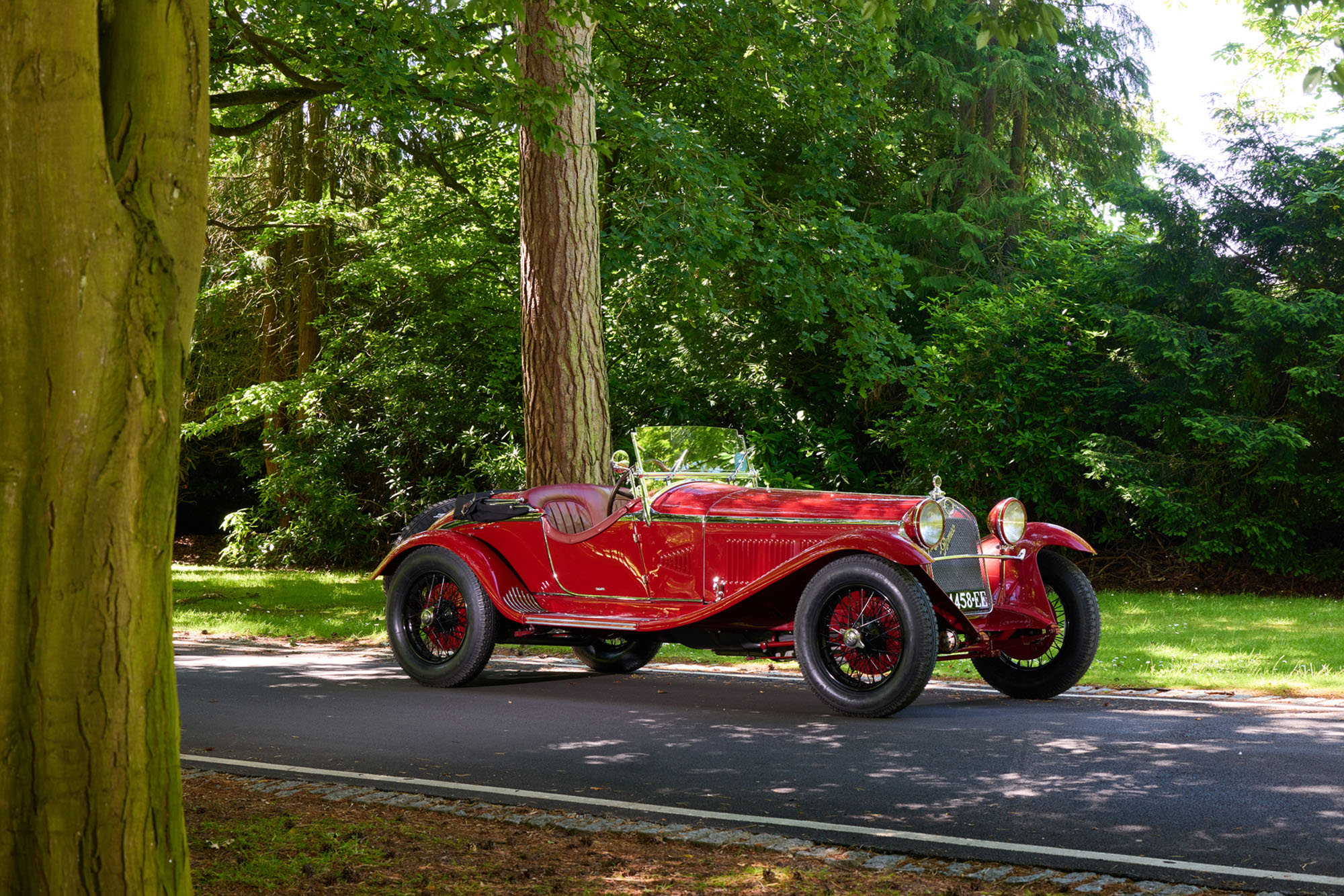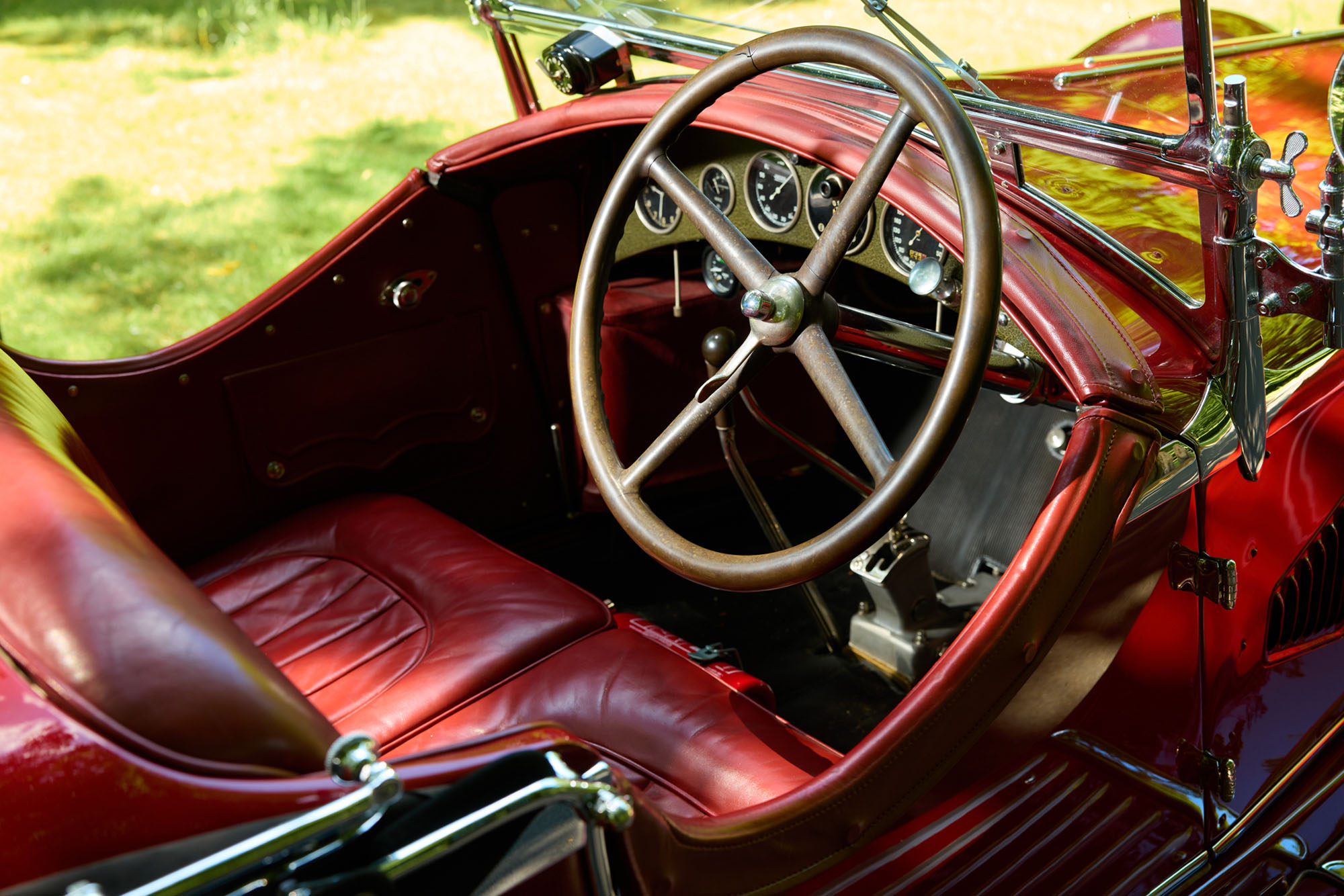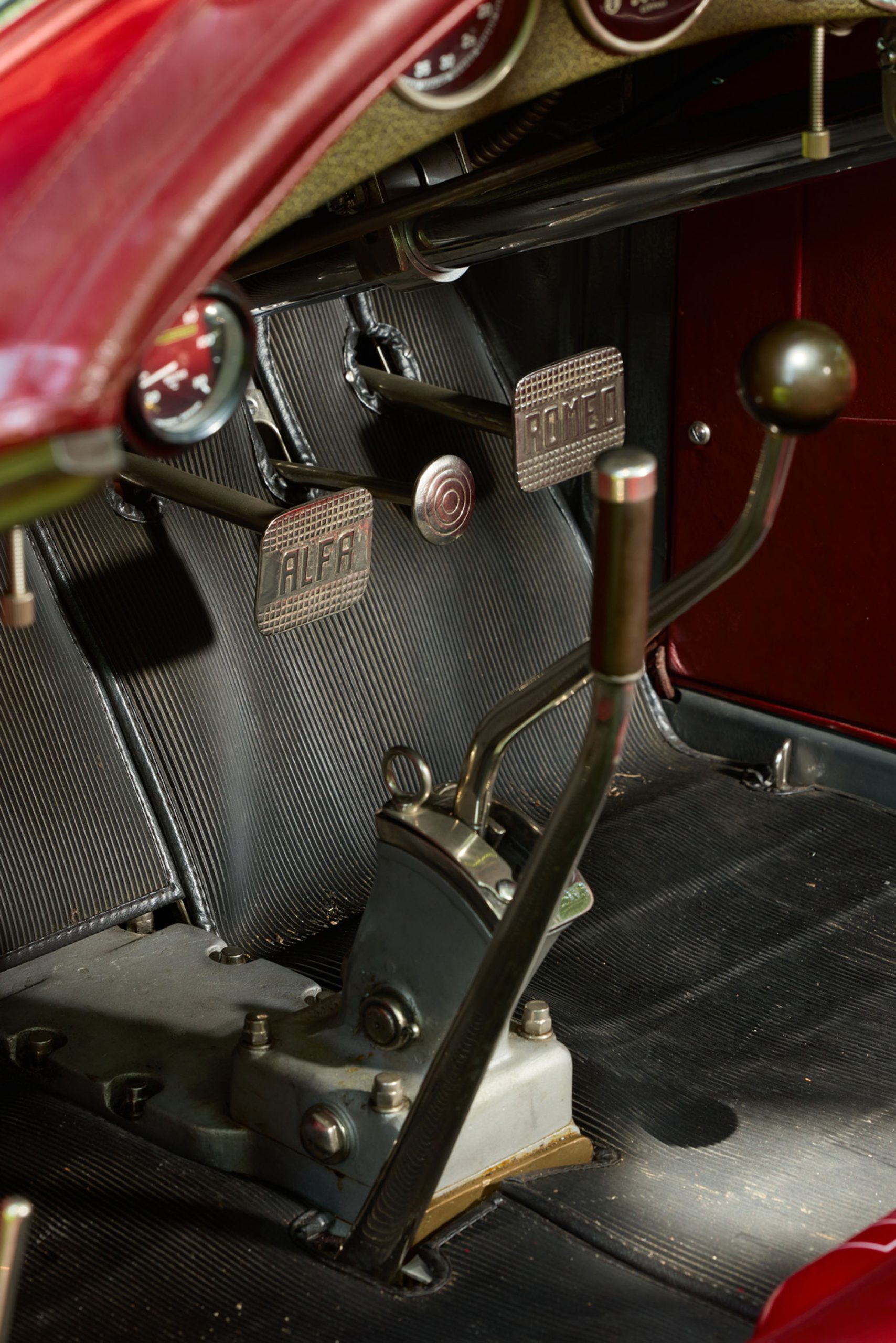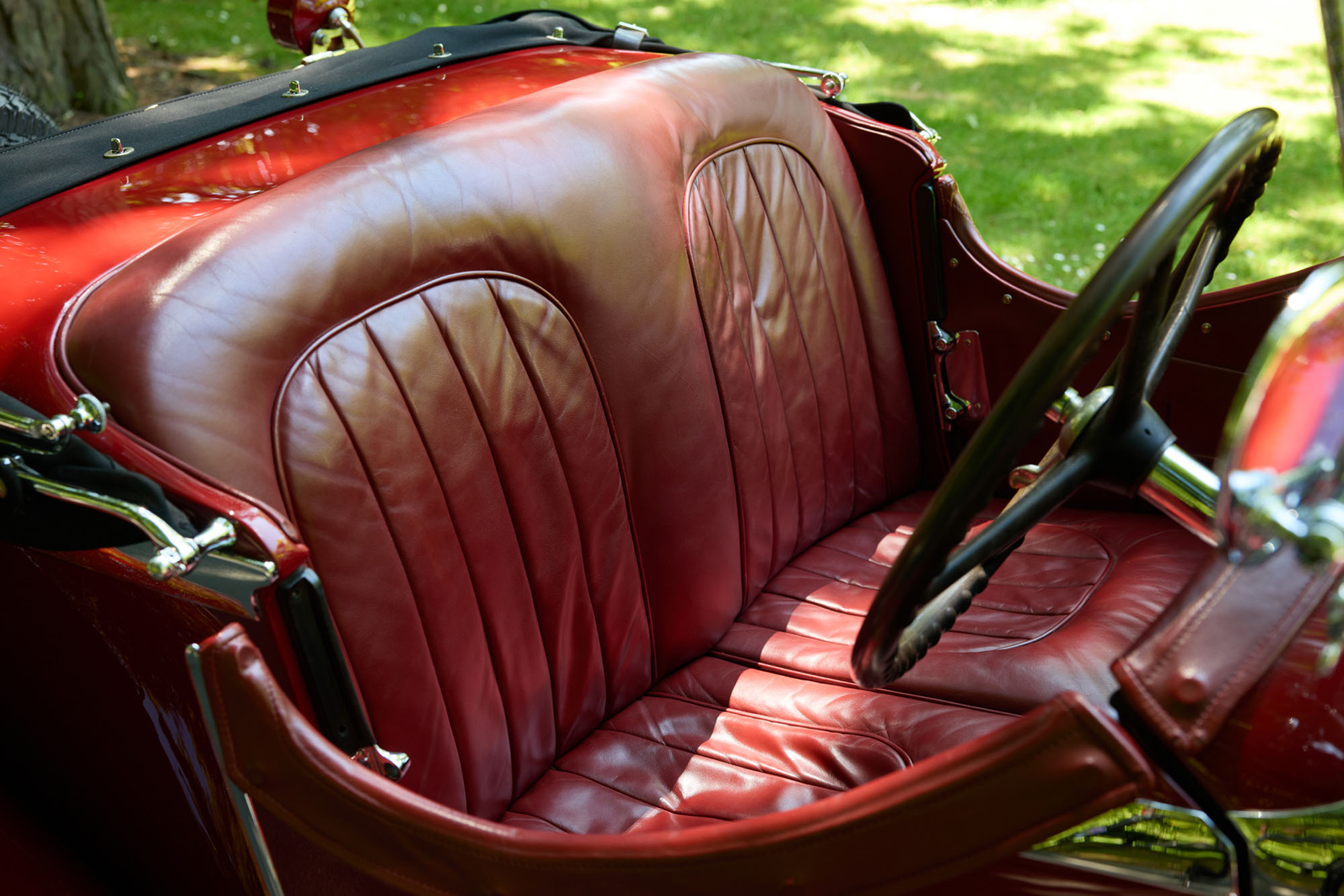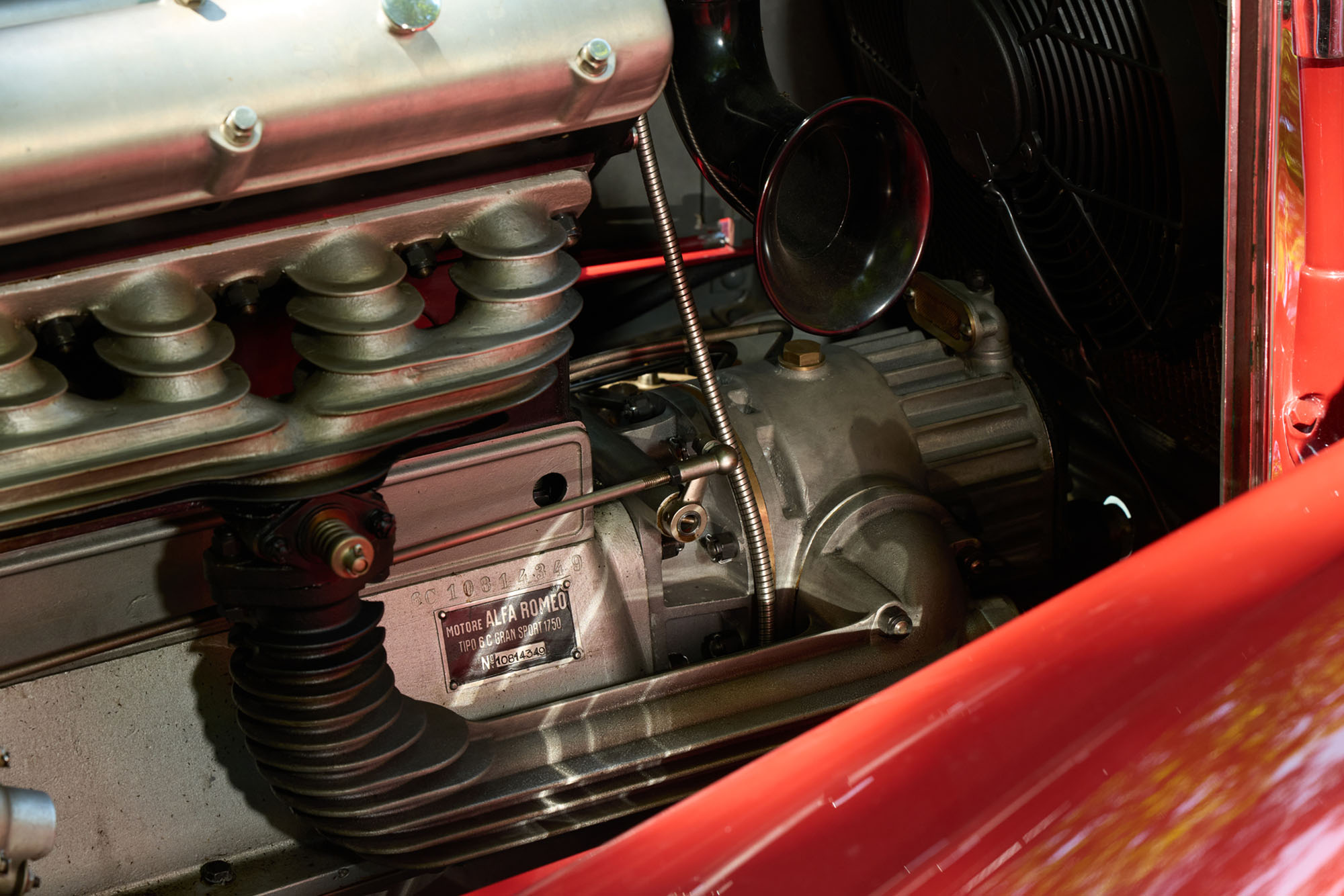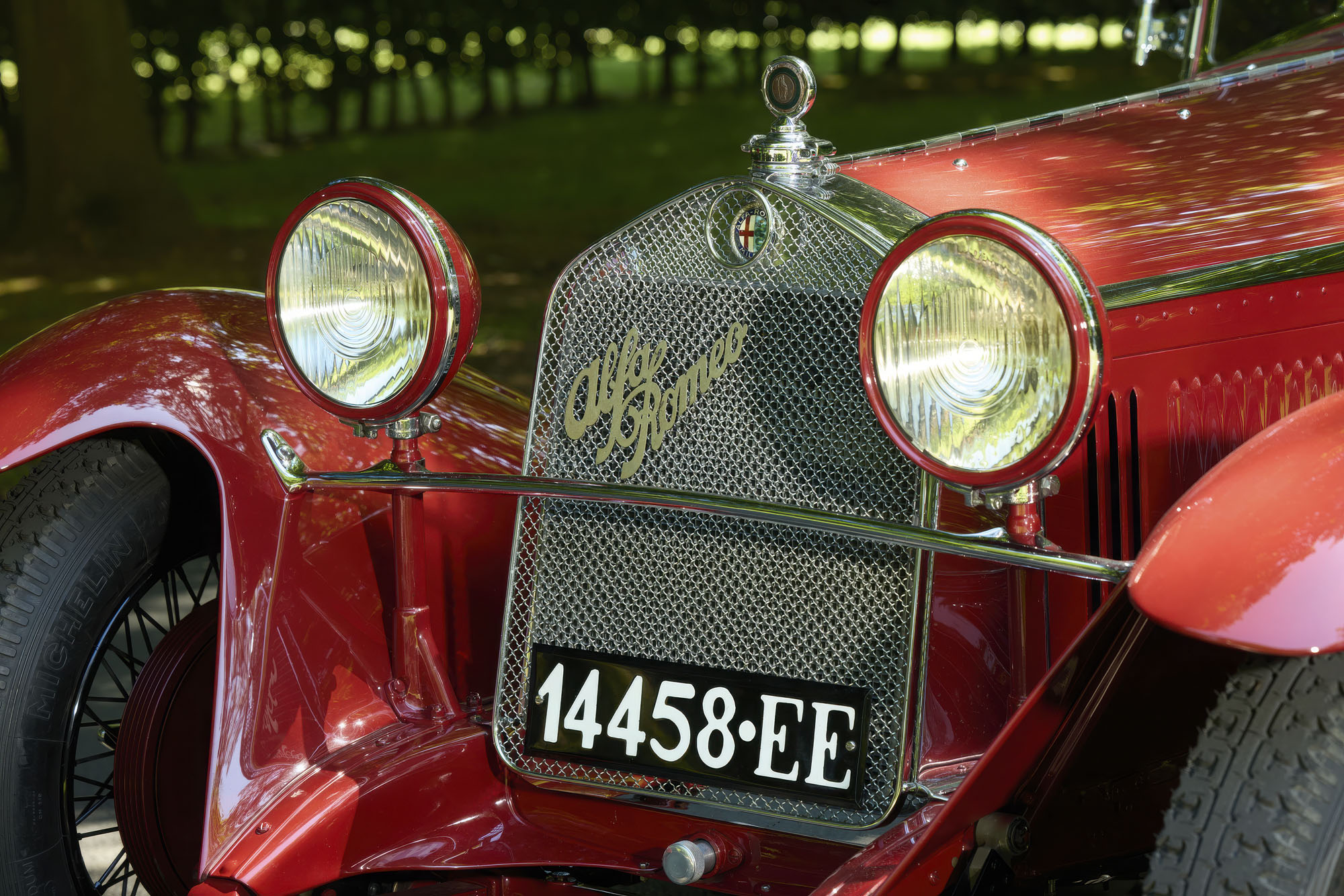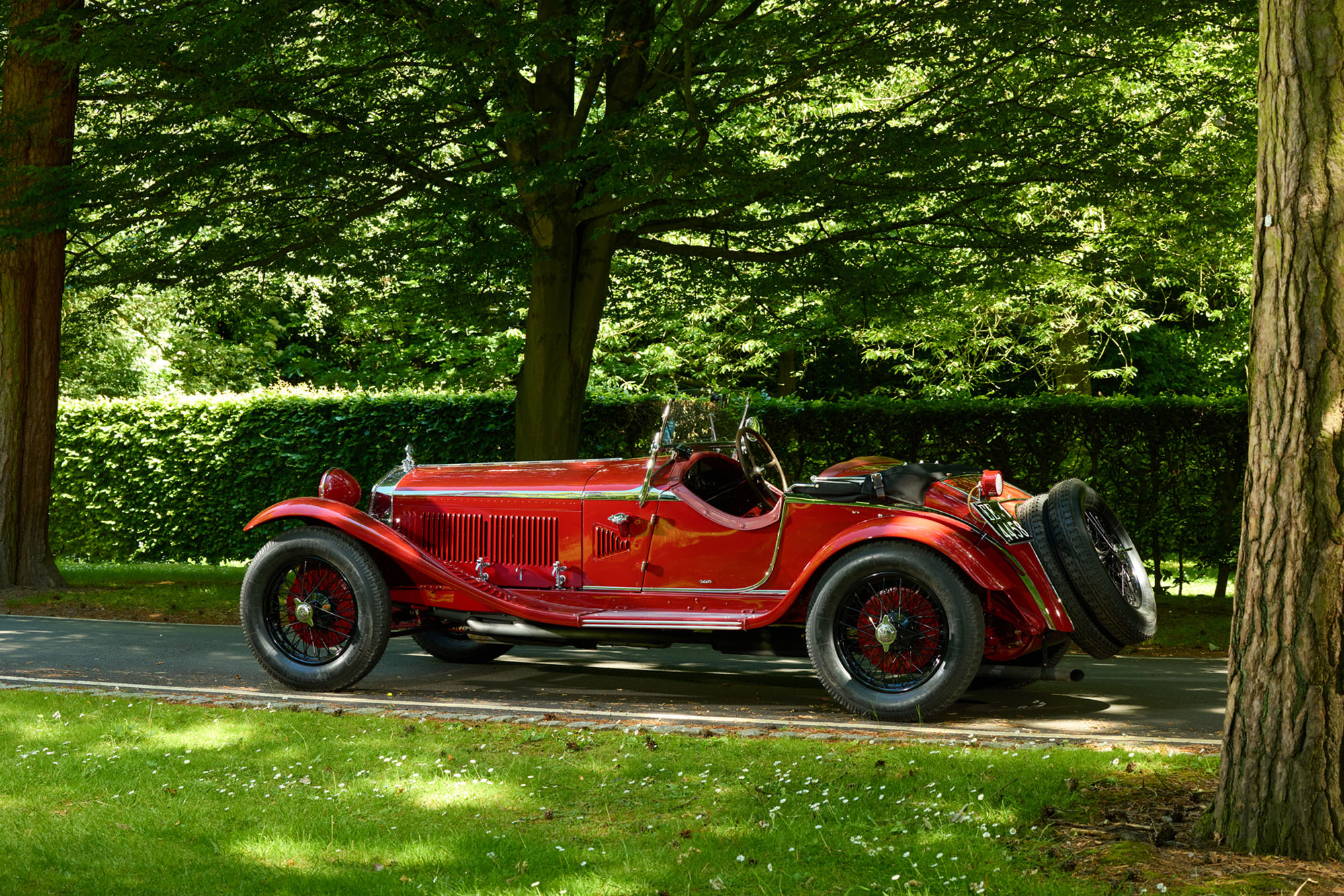Grand Prix Origins
The origins of Alfa Romeo’s legendary 6C 1750 model can be traced to 1923, when Nicola Romeo hired engineer Vittorio Jano from rival Fiat. Sig. Romeo wanted to build a successful Grand Prix car with his name on it and Sig. Jano possessed the technical and managerial expertise to achieve this goal. Less than a year after joining Alfa Romeo, Sig. Jano unveiled the P2 – a model many regard as the first modern Grand Prix car and a masterpiece of automotive design. It was an immediate success, winning several Grand Prix races and claiming the first Manufacturers’ Championship for Alfa Romeo in 1925.
Following this achievement, Sig. Jano’s next task was to design a production chassis with great sporting potential. The result was a series of six-cylinder (6C) cars built between 1927 and 1933 in various specifications. During this period, 3,514 Alfa Romeo 6Cs of all types were built. The most rare and desirable models were the short-chassis 1750 Super Sport and Gran Sport, which featured beautiful straight-six engines, with twin overhead camshafts, hemispherical combustion chambers, and Roots-type superchargers. In total, just 309 of these very special 6C 1750 Alfa Romeos were built; almost all were fitted with elegant custom bodies by the pre-eminent European carrozzerie.
Powerful and Nimble
Light and nimble, with excellent roadholding qualities and reliable power, these supercharged 6Cs were among the finest high-performance automobiles of their era and proved wildly successful in competition. They often challenged Bugattis and Maseratis of greater displacement and proved victorious. In both Gran Sport and Testa Fissa forms, 6C 1750s won nearly every major sports car race of the day, including the Mille Miglia, 24 Hours of Spa, Brooklands Double Twelve, and the Tourist Trophy Race.
According to Angela Cherrett’s definitive volume on the model, Alfa Romeo Tipo 6C 1500, 1750, 1900, this car’s engine and chassis, both numbered 10814349, fall among those produced between 1931 and 1932, of which just 106 examples were built.
Chassis 10814349
This particular car was built for the 1931 model year, its history can be traced back to February 23, 1934, when the car was imported into Switzerland, according to notes on file compiled by the previous owner. Little is known of the Alfa Romeo’s Swiss existence, except that the original body was damaged and repaired at one point, leaving only the original substructure and some interior panels intact.
Car Highlights
- Rare and Desirable 6C 1750 Gran Sport with Matching Engine and Chassis Numbers
- Over Five Decades in Single Family Ownership
- Recent Major Engine Overhaul by the Respected Jim Stokes Workshops Ltd.
- Exquisite and Meticulously Documented Restoration by C. Cook Enterprises
- Winner of Numerous Best in Class and Best of Show Awards at Prestigious Venues
- An Ideal Event Entry, from International Concours d’Elegance to the Mille Miglia
Technical Specs
- 1,752 CC DOHC Inline 6-Cylinder Engine
- Roots-Type Supercharger
- Single Memini Twin-Throat Carburetor
- 135 BHP at 4,400 RPM
- 4-Speed Manual Gearbox
- 4-Wheel Mechanically Operated Drum Brakes
- Front Solid-Axle Suspension with Semi-Elliptical Leaf Springs and Friction Shock Absorbers
- Rear Live-Axle Suspension with Semi-Elliptical Leaf Springs and Friction Shock Absorbers
Around 1960, the Alfa Romeo was purchased by Jean de Dobbeleer, the noted Bugatti agent and exotic automobile dealer in Brussels, Belgium. Soon after, the Gran Sport was sold to American enthusiast Gene Cesari and exported to the US, where, according to notes in the accompanying file, it eventually appeared on the lot of a Cadillac and Rolls-Royce dealer in St. Louis, Missouri. It was from this dealership that Vivian Krespi of Princeton, New Jersey, purchased the 6C 1750.
In 1966, Ned Reich of Cleveland, Ohio, learned of the availability of an Alfa Romeo Gran Sport and purchased the car directly from Ms. Krespi. The Alfa Romeo saw little use over the next two decades, though extensive research was carried out and parts were accumulated in anticipation of the high-level restoration that would eventually take place.
Restoration
In 1993, the restoration project was entrusted to C. Cook Enterprises, a respected prewar car specialist based in Erlanger, Kentucky. In the course of this exhaustive three-year restoration, great efforts were made to ensure the accurate re-creation of Zagato Spider coachwork.
Similarly, great pains were taken with external details, such as the traditional Italian color scheme, brightwork, the maker’s label for the shock absorbers, and the distinctive crackle paint finish on the dashboard – features that are rarely restored with such accuracy. As this work was being carried out, the chassis was carefully restored, and the engine was substantially rebuilt. The Alfa Romeo was unveiled at the 1996 Pebble Beach Concours d’Elegance®, where it earned Best in Class and the Strother MacMinn Award for the Most Elegant Sports Car.
The car went on to capture a Best in Class at the Amelia Island Concours d’Elegance and a perfect 100-point score at the CCCA National Meet. Perhaps its most impressive concours honor came at the exclusive Louis Vuitton Classic at Rockefeller Center in 1997. There, a panel of discerning judges, including Phil Hill – a famed Alfista, Grand Prix driver, and fellow Gran Sport owner – selected it as Best of Show from a field of 48 significant classics and sports cars.
In current ownership, this Alfa Romeo has seen spirited use following a major engine rebuild by the renowned Alfa Romeo restoration specialist Jim Stokes Workshops Ltd. of Hampshire, England. In 2023, the consignor was invited to take part in the private Alfa Romeo 8C tour in Bavaria, Germany, and he reports that the 1750 was in such an ideal state of tune on the event that it outpaced most of the 8Cs present. Higher praise would be difficult to find.
Now Available
Gooding & Company is honored to present this technically sophisticated and aesthetically brilliant prewar sports car, which combines the most desirable Series V Gran Sport chassis with striking open coachwork in the classic Zagato style. This is an extraordinary opportunity to acquire one of the most celebrated and expertly restored examples of the legendary 6C 1750 Gran Sport.
Provenance
- Silvio Lügli, Lucerne, Switzerland (acquired in 1947)
- Heinz Berchtold, Lucerne, Switzerland (acquired from the above in 1948)
- Willy Baltensberger, Dietlikon, Switzerland (acquired from the above in 1950)
- Jean Sulzer, Cologny, Switzerland (acquired from the above in 1955)
- Robert Baer, Switzerland (acquired from the above in 1959)
- Jean De Dobbeleer, Brussels, Belgium (acquired circa 1960)
- Gene Cesari, Vermont (acquired from the above circa 1960)
- Derry Mallalieu, South Norwalk, Connecticut (acquired from the above circa 1960)
- Vivian Krespi, Princeton, New Jersey (acquired circa 1960)
- Ned Reich, Cleveland, Ohio (acquired from the above in 1966)
- Current Owner (acquired from the above in 2017)
Information
Please see Gooding & Company for more information.


